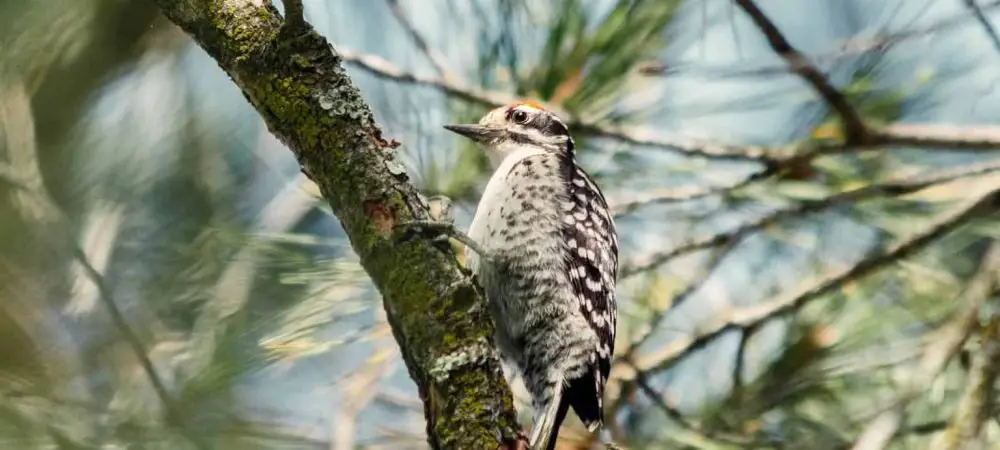
Want to learn more? Take a look at the North American Guide to Woodpeckers
Delaware is one of the more heavily-forested states on the industrialized Atlantic Coast.
Oaks and cypresses thrive in the coastal climates, so these areas naturally become ideal habitats for woodpeckers.
Below, we list the seven most commonly encountered types of woodpeckers in Delaware, so birdwatching enthusiasts can know how and when to spot one.
Take a look at our article on How to Attract Woodpeckers?
What Woodpeckers can be seen in Delaware?
Table of Contents
1. Red-bellied Woodpecker
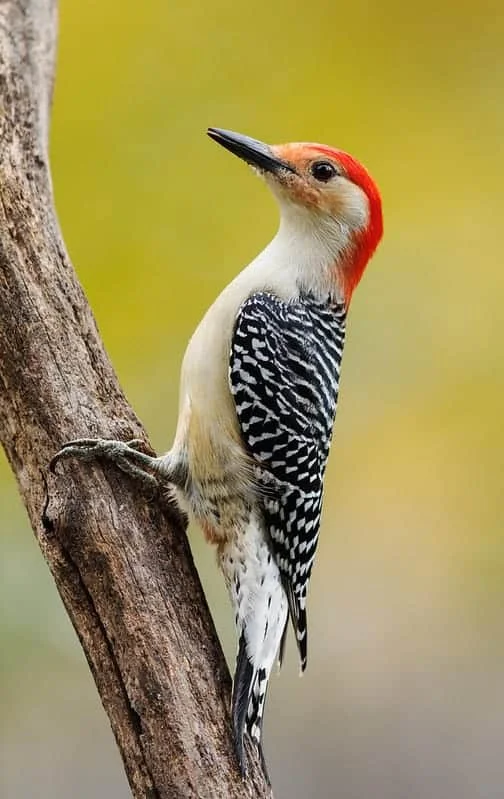
Wingspan
15-18 inches
Weight
2.65 ounces
Life Expectancy
12 years
Diet
Insects
Their bellies are closer to a white and red blend that resembles pink with the naked eye, but these woodpeckers are much easier to spot in the snow.
Much of their heads are also covered in red, though less than the red-headed woodpecker due to the gray spots across the eyes and neck in males (females have even less red).
Fortunately, red-bellied woodpeckers overwinter in Delaware, so they can be seen after other birds have already flown south.
They prefer natural forests like most birds, but they can be lured to bird feeders with sunflower seeds and suet cakes more often.
2. Downy Woodpecker
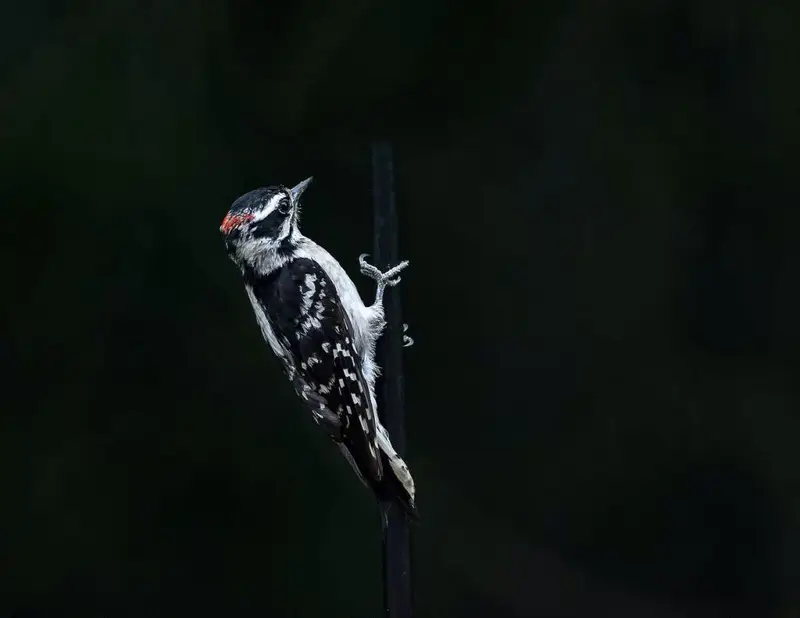
Wingspan
3.27 to 4.13 inches
Weight
0.75 to 1 ounce
Life Expectancy
12 Years
Diet
Insects & Non-insect arthropods
The hairy woodpecker’s smaller twin is among the tiniest of all woodpeckers, averaging about an ounce in weight.
Their crown of red feathers is at the rear instead of the middle on males, and it also has a smaller beak. Its customary black and white frame is checkered on the wings, and mostly black with a prominent white stripe down the backside.
It is not uncommon to see a downy woodpecker at a birdfeeder if it’s baited with the same treats ascribed to previous entries. In nature, they tend toward deciduous trees that have plenty of bugs crawling through them.
This bird often overwinters in Delaware, making it one of the most commonly encountered when others have become scarce.
A sociable bird, downy woodpeckers like to hang out with songbirds when they’re not stealing water from hummingbird feeders.
3. Hairy Woodpecker
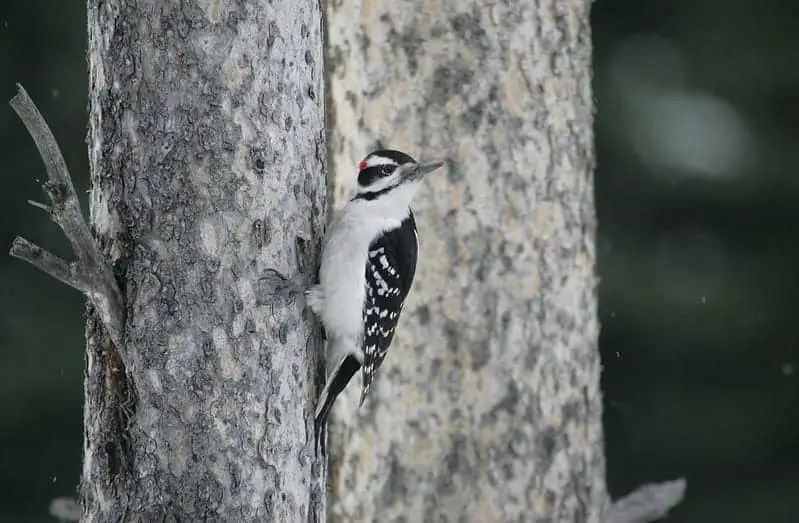
Wingspan
15 inches
Weight
1.4 to 3.4 ounces
Life Expectancy
15 years
Diet
Wood-boring insects & tree sap
These resemble downy woodpeckers so closely that many people erroneously consider them the same bird.
Hairy woodpeckers can be up to three times as large as downy woodpeckers, however.
They do have the trademark crown found on its kind, a small patch of red feathers above the brow, as well as the stark black and white stripe patterns that run from the top of its legs to the top of its head.
Hairy woodpeckers like large trees like oaks that have plenty of places to find bugs, and they don’t discriminate between those in the woods or one planted next to a home.
Like their pileated cousins, the hairy woodpecker will often seek dead trees where termites and wood beetles like to gather.
4. Pileated Woodpecker
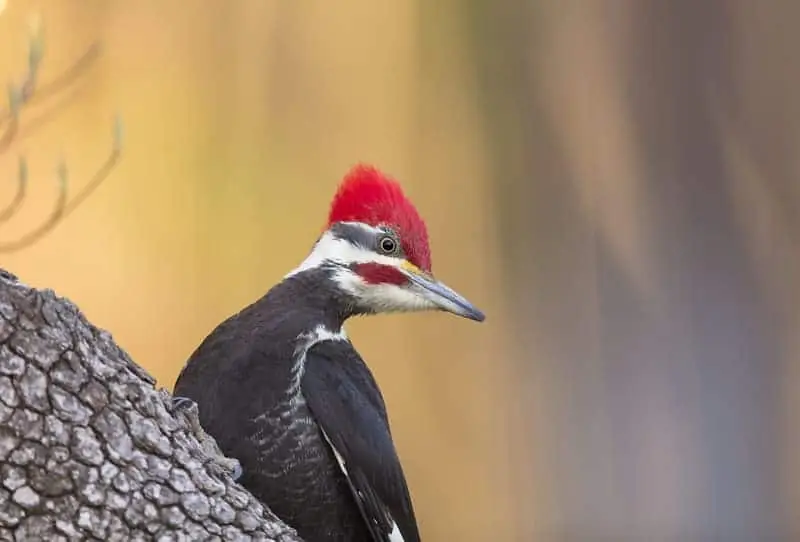
Wingspan
26 to 30 inches
Weight
8.8 to 14.1 ounces
Life Expectancy
13 years
Diet
Fruit, nuts & insects
Likely the most frequently spotted of the American woodpeckers, the pileated family consists of many subgroups that are too numerous to list here.
They are all recognizable by the red tuft of hair atop their crowns, styled into something of a mohawk, and standing out against its otherwise all black and white frame.
They hang around places with tall trees, like those of Ellendale State Forest, but also near homes and businesses if they have some trees planted nearby.
These woodpeckers usually seek dead or water damaged trees that are more likely to contain the termites and beetles that are most likely to inhabit them.
They can also be baited into bird feeders with the typical delicacies woodpeckers love, like suet, seeds, and mealworms.
Pileated woodpeckers will often overwinter in their home regions, moving a bit farther south to lower country, but they are a year-round bird in Delaware.
5. Yellow-bellied Sapsucker
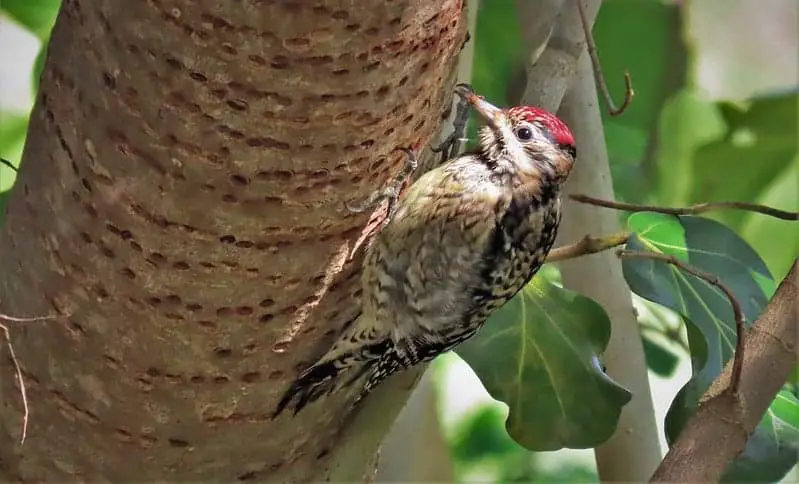
Wingspan
13 to 16 inches
Weight
1.5 to 1.9 ounces
Life Expectancy
7 years
Diet
Tree sap, insects & fruit
This small bird does indeed poke neat holes in trees so they can suck out the sap. They also have yellow bellies.
Besides that, their feathers are black and white with shades of yellow throughout, with more apparent black-and-white coloring on the wings.
Their faces always contain a red patch of feathers across the forehead, with an additional red patch on the chin for males.
It should come as no surprise these birds look for trees like maple and hickory.
Yellow-bellied sapsuckers are a migratory summer bird in Delaware, preferring warmer climes in the winter and becoming scarce.
6. Northern Flicker
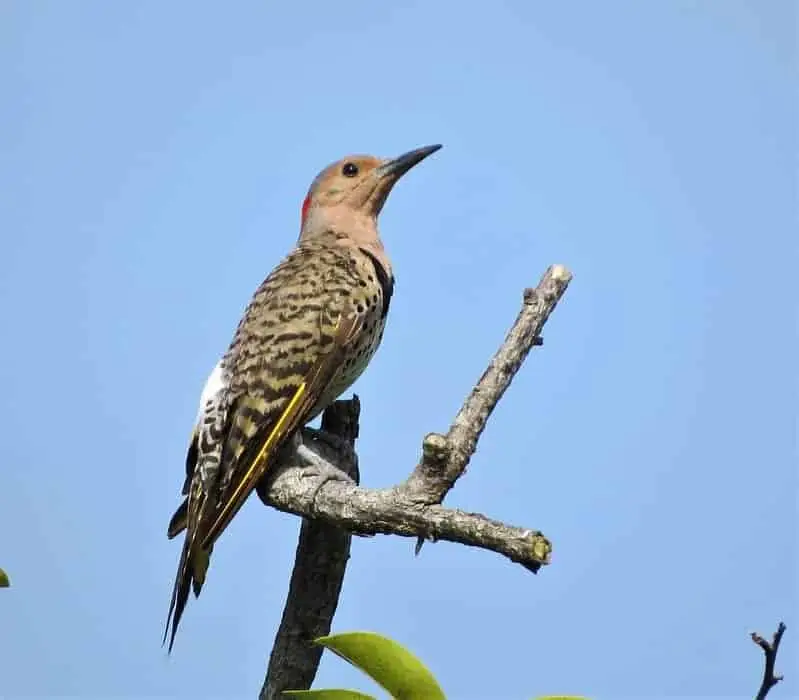
Wingspan
21.3 inches
Weight
6 ounces
Life Expectancy
9 Years
Diet
Insects, seeds, nuts & fruit
This relatively large woodpecker frequents Delaware in the summer to take advantage of seasonal growth.
Flickers can be spotted anywhere trees exist, especially condensed gatherings that hide their nests.
They will venture into backyard bird feeders for the usual snacks, and take residence in a lone neighborhood tree if no one bothers it.
Northern flickers have an odd gathering of styles: silver and brown head with black and bright red markings; a yellow/orange and white body spotted with black like a leopard; and, in many, radiant golden feathers on the underside of its wings and tail.
Like the downy and other smallish woodpeckers, flickers like to carve out hollows in dead wood to stash their nests. The piles of wood that accumulate from their construction work are good clues for wear to look.
7. Red-headed Woodpecker
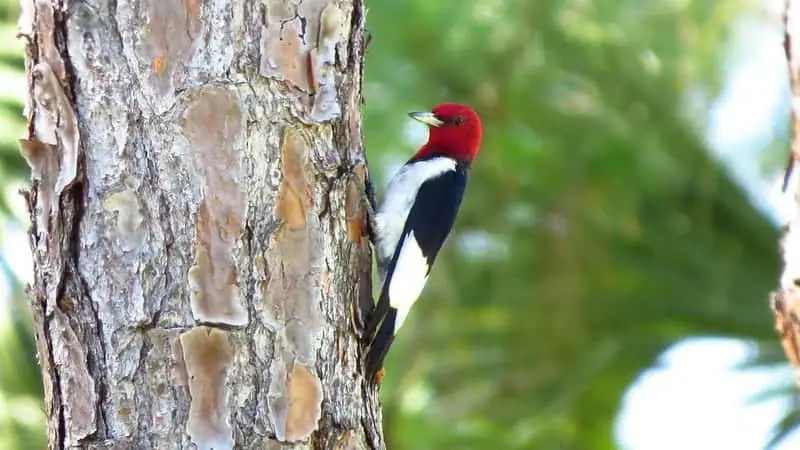
Wingspan
16 inches
Weight
2.5 ounces
Life Expectancy
9 Years
Diet
Insects & Berries
This is perhaps one of the most easily recognizable animals in existence, with its bright red head held in stark contrast against a white belly and black wings.
If it weren’t so small, the red-headed woodpecker could be spotted everywhere, but it can be lured with bird feeder bait like suet, nuts, and small berries.
Though it can become aggressive if something violates the proximity of its nest, this bird will present itself in residential tree lots and parks so long as it remains undisturbed.
Breeding numbers spick in the summer and decline to scattered hideaways in the winter, with migratory patterns in flux during the temperate months.

More Articles.
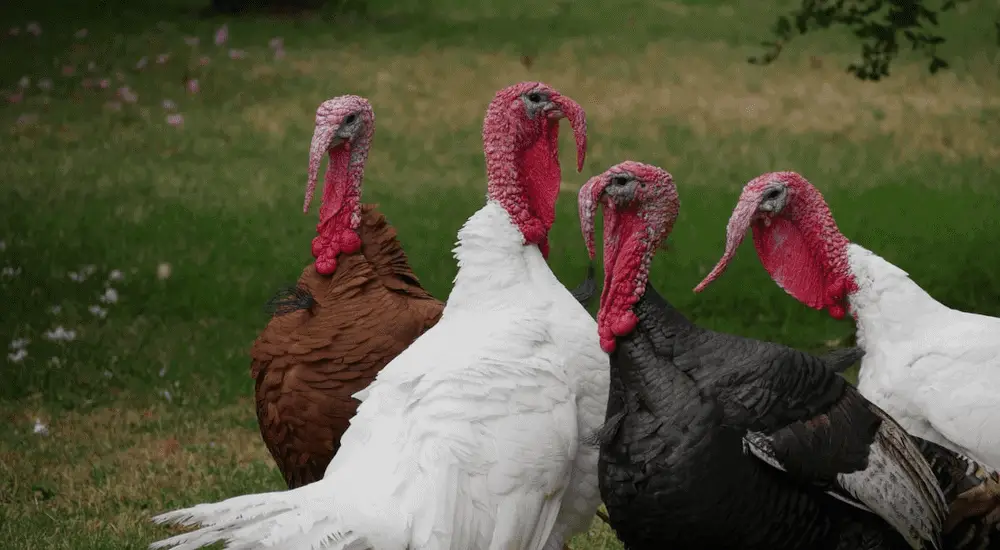
How to attract Wild Turkeys to your yard?
Wild turkeys can be provide quite a fascinating addition to your yard. Providing acorns in
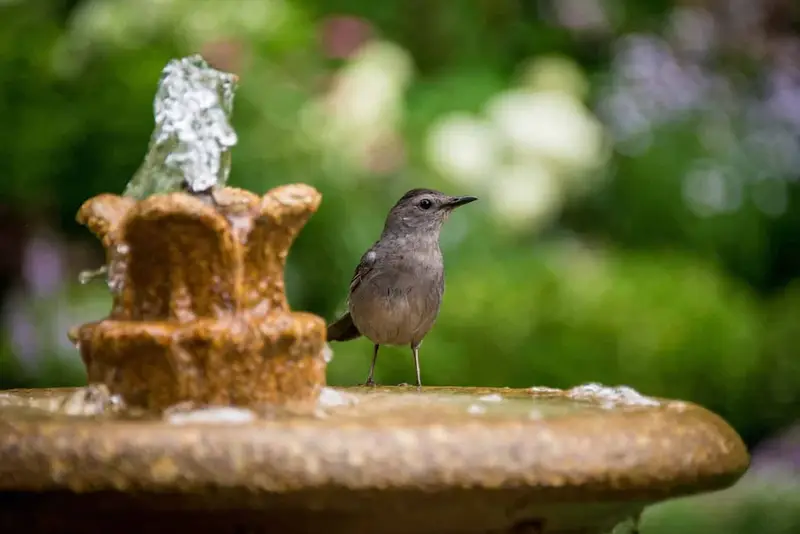
Bird baths can offer your local birds a place to hang out and a nice
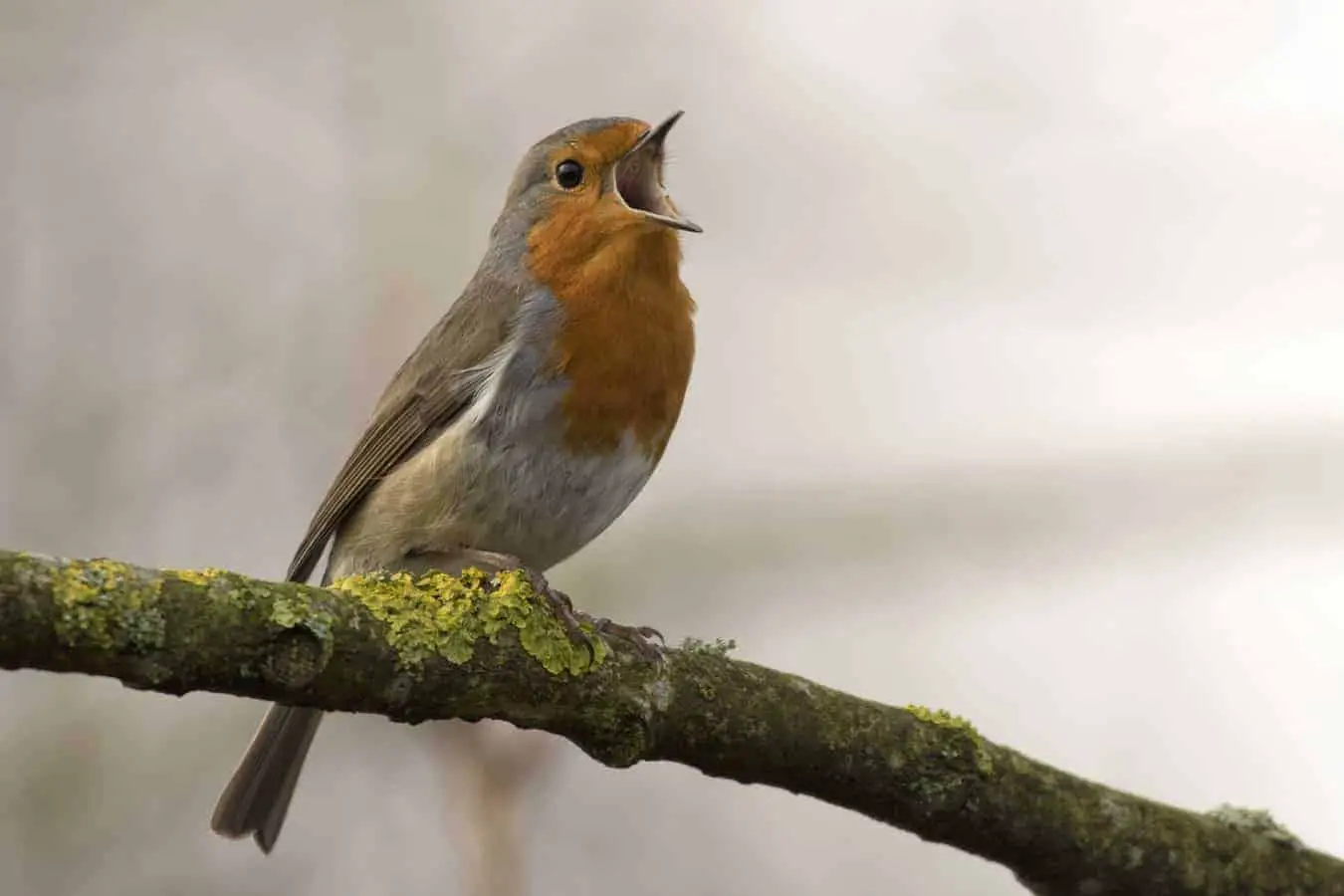
How to Attract Robins to your Yard?
Robins are known for being friendly and energetic birds that love to spend time hanging

About Us
We are avid bird-watchers who recently retired, allowing us more time to travel the world. Fortunately, we have managed to visit numerous countries around Europe, Asia, and America. Watching and photographing birds has been a passion for many years and we are making the most of the extra time on our hands!
